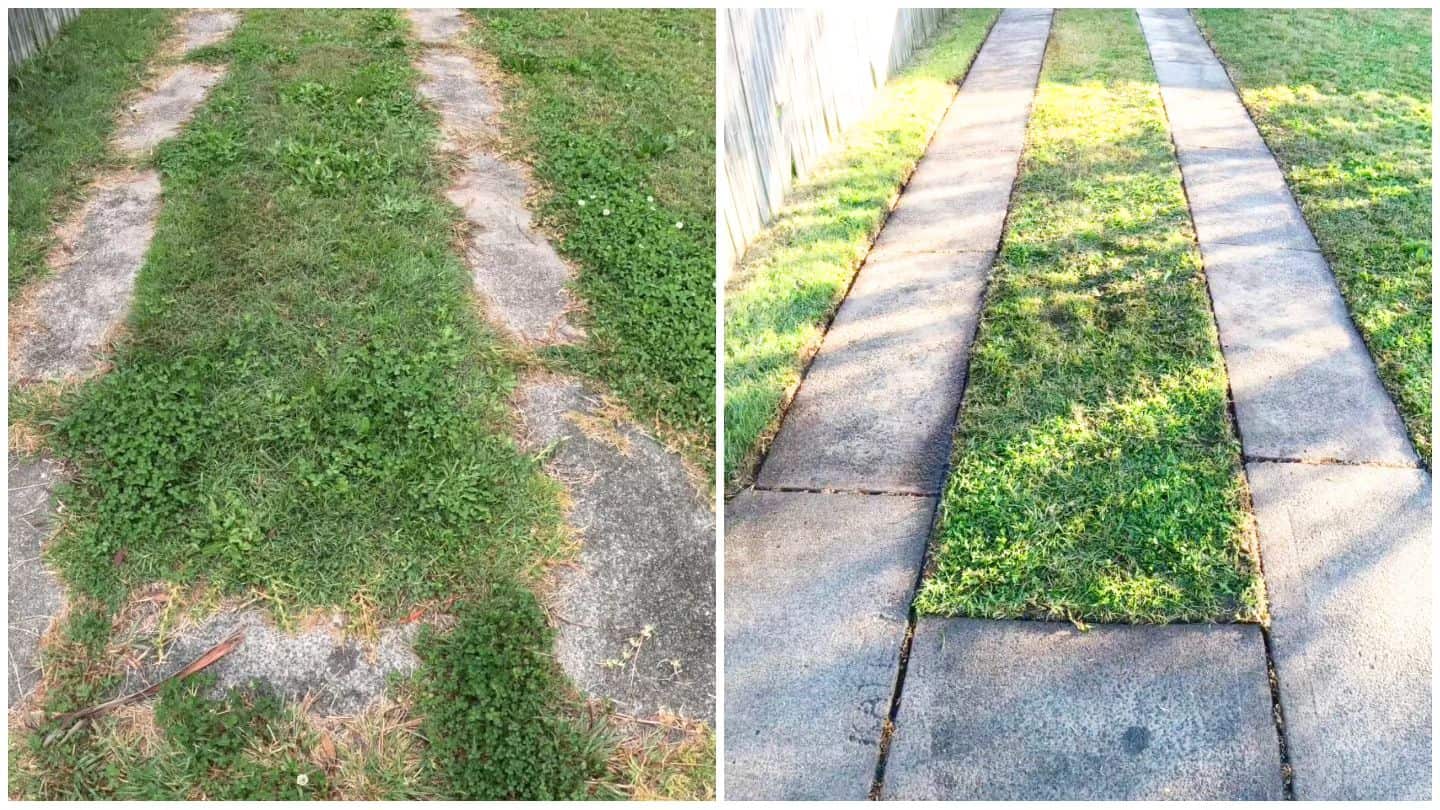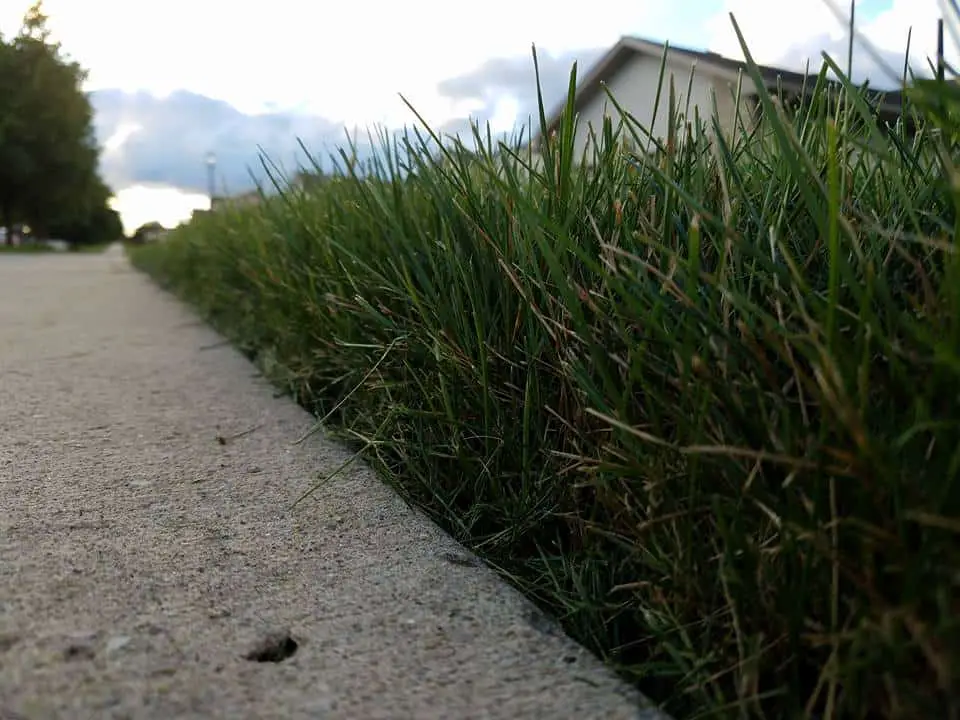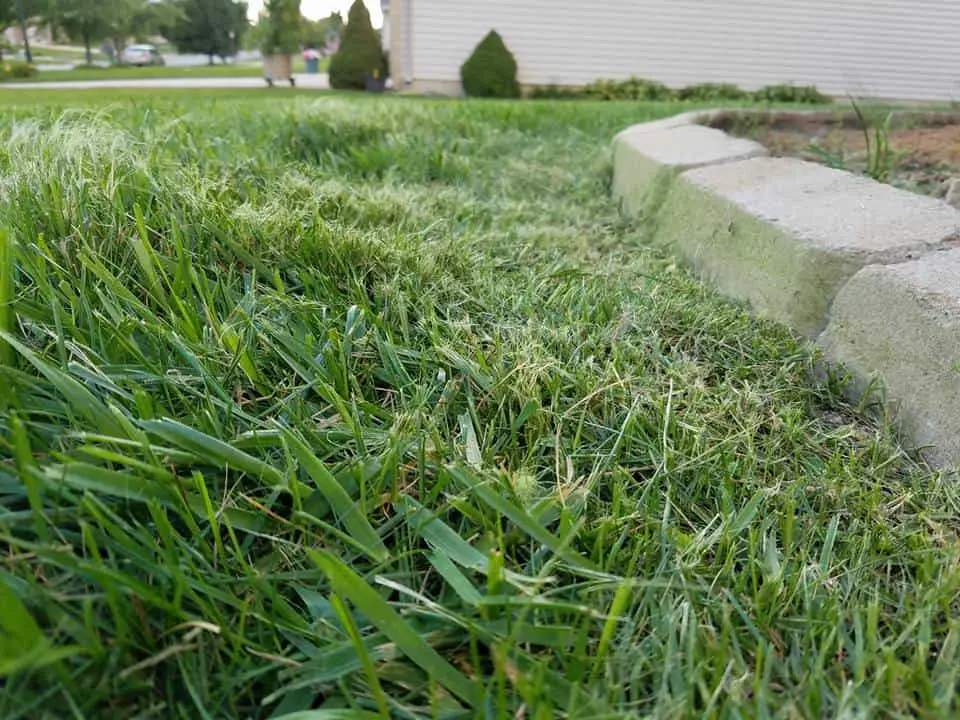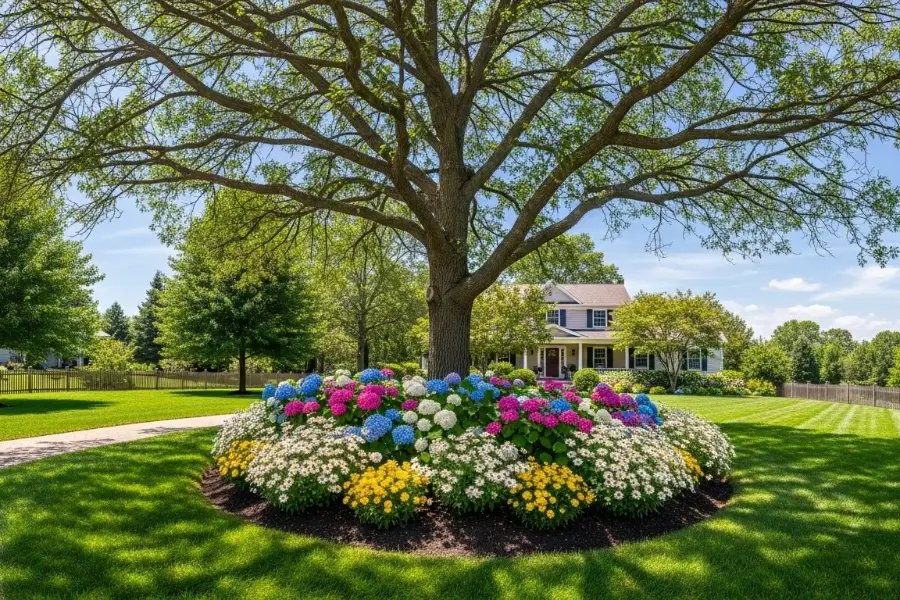Hi there!
Ever glanced at your lawn and noticed the unruly growth or unwanted weeds that blur its edges? I’ve been there too, and it’s a common challenge for many homeowners. In fact, studies indicate effective edging not only boosts lawn aesthetics but also promotes overall health.
This comprehensive guide will present you with the numerous benefits of regular lawn edging, revealing how this simple practice can transform your yard into an attractive, low-maintenance space.
Ready to unlock a greener thumb? Dive in!
Key Takeaways
- Edging your lawn boosts curb appeal and adds value to your property by creating a well – manicured and professional appearance.
- Regular edging blocks overgrowth, protecting designated areas from unwanted grass invasion and reducing the need for constant maintenance.
- Edging acts as a defense mechanism against weeds, preventing invasive roots from infiltrating garden beds and promoting overall lawn health.
- Establishing a consistent edging schedule based on factors like soil moisture levels, grass growth rate, lawn size, and personal preferences ensures a polished look throughout the year.
Benefits of Edging Your Lawn
Edging your lawn offers a multitude of benefits, including boosting curb appeal, blocking overgrowth, defending against weeds, reducing overall maintenance, and providing a well-manicured appearance.
Boosts curb appeal
Boosting curb appeal is one of the major benefits of edging your lawn. As an experienced homeowner, I can’t overemphasize its importance in enhancing the overall attractiveness and value of your property.
A neat and properly edged lawn catches the eye, adding to that visual allure that sets your property apart from others in the neighborhood. It brings out a level of professionalism and polish associated with well-maintained lawns, making people immediately notice how meticulous you are about maintaining your outdoor space.
Trust me; nothing says “welcome” quite like a beautifully edged lawn! This simple act does not only enhance aesthetic appeal but also significantly increase your home’s market value should you decide to sell it someday – an insight many homeowners, garden designers, and professionals leverage to their advantage.
So next time you’re considering which landscaping tasks to tackle, remember what an impact regular edging can make on your home’s curb appeal! Your neighbors will be green with envy as they admire your neatly manicured yard.
Read more: Can String Trimmer Cut Skin?
Blocks overgrowth
Lawn owners like you clearly understand the constant battle against invasive overgrowth. Edging your lawn is a formidable strategy in this turf war that offers numerous benefits, including blocking overgrowth effectively.
You can significantly reduce the unsightly and sometimes destructive encroachment of turf grass into your flower beds or other defined spaces by adopting a regular edging routine.
A well-defined edge serves as a virtual fortress against errant sprigs looking to spread beyond their designated territory. It keeps everything neat and tidy while preserving your carefully designed landscape areas from unwanted grass invasion.
With this effective approach, maintaining healthy boundaries within your garden becomes an effortless task while reaping the benefits of edging your lawn. Plus, it provides another layer of defense against weed infiltration – that’s indeed killing two birds with one stone!

Defends against weeds
As a lawn owner, one of the main benefits of edging your lawn is its power to defend against bothersome weeds. Edging creates a fortress-like barrier at the border of your beautiful green space that prevents invasive weed roots from sneaking past and infiltrating your well-kept garden beds.
Undesired growth doesn’t stand much chance against this effective method. The relief you’ll feel knowing those pesky invaders are halted in their tracks is worth the effort put into regular edging routines.
This defense mechanism isn’t just about maintaining aesthetic appeal either; it’s about promoting overall lawn health as well by keeping harmful weeds at bay. Think of each act of edging as an investment that safeguards the pristine condition and longevity of your cherished outdoor oasis.
Reduces overall maintenance
One of the significant benefits of edging your lawn is the reduction in overall maintenance. By creating a clear and defined barrier between your lawn and other areas, such as flower beds or walkways, you prevent grass from encroaching where it shouldn’t be.
This means less time spent on trimming grass edges and tidying up stray growth. Additionally, edging helps to block overgrowth, making it easier to mow your lawn without worrying about straying into unwanted areas.
With reduced maintenance needs, you’ll have more time to simply enjoy your well-manicured lawn without constantly tending to it.
Provides a well-manicured appearance
When it comes to achieving a well-manicured lawn, edging is an essential step that should not be overlooked. By carefully trimming the edges of your lawn, you create clean and defined boundaries that instantly elevate the overall appearance of your outdoor space.
Not only does this add a touch of sophistication and professionalism, but it also sets your property apart from others in the neighborhood. With crisp and neat edges, your lawn will exude a sense of pride and attention to detail that cannot be achieved through regular mowing alone.
So why settle for anything less than perfection when edging can give you the immaculate look you desire?.
When and How Often to Edge
To determine the right timing for edging your lawn, consider factors such as grass growth rate, weather conditions, and personal preferences. Regularly maintaining a consistent edging schedule will help to keep your lawn looking polished and well-maintained.
Read more: Can I Put Metal Wire In My String Trimmer? Surprising Secret

Determining the right timing
As a lawn owner, I know how important it is to determine the right timing for edging your lawn. While there isn’t an exact time of year that applies to everyone, there are a few factors you should consider.
First, assess the integrity of your lawn’s edges every time you mow. This will help you spot any overgrowth or areas that need attention. Secondly, aim to edge your lawn at least once or twice a year.
This regular maintenance schedule will keep your yard looking its best and prevent any major issues from arising.
One crucial tip is to edge during the late afternoon, between 2 p.m. and 4 p.m., which is considered the optimal time for this task. Dry edging can be done at any time of year but is particularly beneficial during the summer when lawns need frequent trimming.
Factors to consider
When it comes to edging your lawn, there are several factors to consider in order to achieve the best results. These factors include:
- Soil moisture: The moisture level in your soil can impact grass growth and, consequently, the frequency of lawn edging. Moist soil conditions may result in slower grass growth, meaning you may need to edge less frequently.
- Grass growth rate: The rate at which your grass grows can also affect how often you should edge your lawn. Faster-growing grass may require more frequent edging to keep it looking neat and well-maintained.
- Lawn size: The size of your lawn is an important factor to consider when deciding how often to edge. Larger lawns may require more time and effort for edging compared to smaller ones.
- Personal preferences: Each homeowner has their own idea of what a well-manicured lawn looks like. Some may prefer sharper edges with a distinct separation between the lawn and other areas, while others may opt for a more natural, seamless transition. Consider your personal preferences when determining how often you should edge your lawn.
Regular maintenance schedule
A well-considered schedule for regular lawn edging maintenance can ensure a clean, finished look for your lawn. To help with this, I’ve put together a simple schedule that you can follow.
| Month | Task |
| January | Review your lawn for any signs of overgrowth. If necessary, complete an initial edging to start the year off clean. |
| February | With winter in full swing, you might not need to edge your lawn this month. However, keep an eye out for any weeds invading the borders of your lawn. |
| March | Start regular edging this month if the grass has begun to grow faster with the onset of spring. |
| April | By now, your lawn should be growing at a steady rate. Maintain the edging every two weeks or so to keep it neat. |
| May | Continue with bi-weekly edging. After edging, make sure to mow the lawn for a clean finish. |
| June | Keep up the bi-weekly edging and mowing. The warm summer months may cause faster growth, so keep an eye on your lawn’s condition. |
| July | Stick to the bi-weekly edging schedule. Remember, the depth of lawn edging should be sufficient to create a clear separation between the grass and other areas. |
| August | Continue with the bi-weekly edging and mowing. Pay attention to the borders of your lawn to prevent any overgrowth. |
| September | As the growth rate starts to slow down, you can start to edge once every three weeks instead of bi-weekly. |
| October | Fall is here and grass growth will slow down. You may only need to edge once this month. |
| November | Before winter sets in, make sure to do one final edging to keep your lawn looking nice throughout the cold months. |
| December | No need for edging this month; it’s time to rest and appreciate the fruits of your hard work! |
Remember, this is a general guide and may need to be adjusted based on the specific growth rate and conditions of your lawn. With regular upkeep, your lawn will hold its structure, shape, and curb appeal all year round.
Conclusion
In conclusion, edging your lawn offers a multitude of benefits. Not only does it boost curb appeal and provide a well-manicured appearance, but it also prevents overgrowth and defends against weeds.
By reducing overall maintenance requirements and contributing to the health of your grass, lawn edging is an essential step in maintaining a pristine outdoor space.

FAQs
1. What are the benefits of edging your lawn?
Edging your lawn provides several benefits including creating a clean and polished appearance, preventing grass from encroaching on walkways or flower beds, making it easier to maintain and mow your lawn, and enhancing curb appeal.
2. How often should I edge my lawn?
The frequency of lawn edging depends on factors such as the growth rate of your grass, the size of your yard, and personal preference. As a general guideline, edging every 2-4 weeks is recommended to keep your lawn looking well-maintained.
3. Can I edge my lawn using hand tools or do I need specialized equipment?
You can edge your lawn using either hand tools like an edging shovel or specialized power tools such as an electric or gas-powered edger. The choice of equipment depends on the size of your yard and how much effort you’re willing to put into the task.
4. Are there any tips for achieving clean and straight edges when edging my lawn?
To achieve clean and straight edges when edging your lawn, it’s important to establish a clear boundary line before starting by using markers like string or stakes. Take slow and steady passes with the edger, ensuring that you follow the established line closely. It may also help to regularly clean out any debris from the cutting blade for optimal results.





